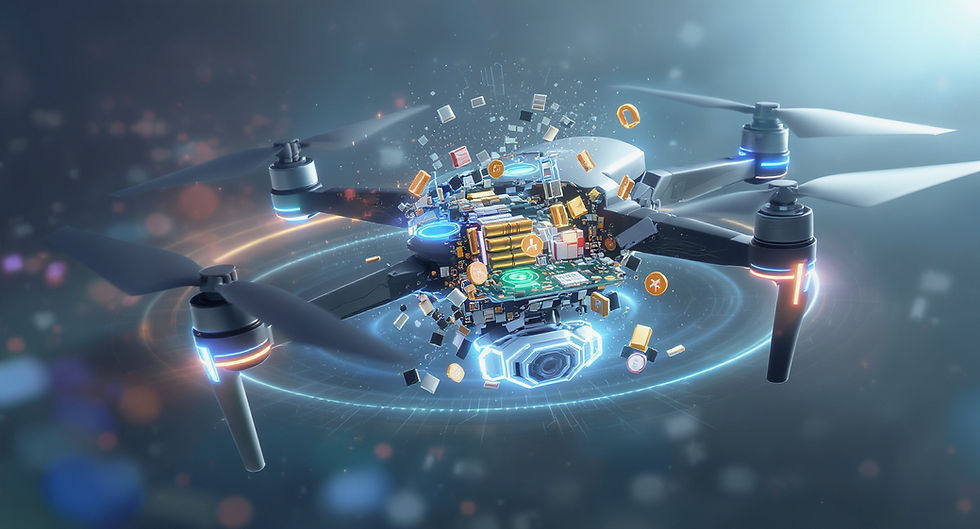From Wreckage to Resource: Mining the Drone Graveyard for a Greener Tomorrow
- THE FLYING LIZARD

- Sep 7
- 2 min read

How e-waste, salvage, and circular design could give drones a second chance at life
When a drone dies, it doesn’t just disappear—it leaves behind a ghostly trail of parts, data, and materials that rarely get talked about. But hidden within that wreckage is a surprising truth: drones may be one of the richest untapped sources of high-value, recyclable waste in the modern tech world. And if we’re going to send millions more machines into the sky, it’s time we get serious about what happens when they fall.
Start with the obvious: batteries. Lithium-ion cells, the beating hearts of most drones, contain cobalt, nickel, and other rare earth metals that come with heavy environmental and human costs. These batteries are rarely recycled, mostly due to cost and complexity. Yet with the right recovery process, they could be repurposed into grid storage systems, second-life energy banks, or even recharged into new UAVs for non-critical missions. Then there’s the plastic—lightweight polymers like ABS and carbon-reinforced nylon—that could be ground down and refabricated into frames, blades, or even 3D printer filament for prototyping next-gen aircraft.
Circuit boards inside drones are another goldmine—literally. Containing gold, silver, palladium, and copper, even a small drone holds a surprising payload of valuable metals. In fact, a ton of e-waste can yield more gold than a ton of ore. And then we have the forgotten value of sensors and optics. Salvaged LiDAR units, thermal cameras, and barometers don’t lose their functionality when the drone fails—they just need a second chance. Enter the refurbishers, the tinkerers, the drone necromancers.
But here’s the catch: most of this potential is never recovered. Why? Because drone design wasn’t built with salvage in mind. Drones are often glued, fused, or encased in materials that make disassembly a nightmare. Manufacturers rarely provide end-of-life guidance, and few consumers know where to send their old UAVs—if they even bother to do so at all. That’s the gap. And it’s one the industry can’t afford to ignore.
If we want to be bold, the solution isn’t just recycling—it’s circular drone design. Imagine drones built with modularity in mind: swappable batteries, snap-fit frames, AI-enabled parts tracking, and digital serials that log each component’s lifecycle. Picture a drone that can diagnose its own health, report which parts are salvageable, and even trigger a “return-to-reuse” protocol when it hits end-of-life. Think of it as a living aircraft with a regenerative footprint.
Even more radical? Bio-based drones. Startups are experimenting with biodegradable airframes made from mycelium, hemp, or recycled cellulose. These one-way drones could complete missions and then safely decompose in the field—zero trace left behind. Combine that with solar foil skin and low-impact manufacturing, and you’ve got the foundation of a true green drone economy.
THE FLYING LIZARD sees the opportunity not just to fly smarter—but to land cleaner. Whether it’s partnering with recyclers, designing with disassembly in mind, or building our own resurrection program for aging drone fleets, the future of flight must include the afterlife. Because the real innovation isn’t just in what drones can do while they’re airborne—it’s what we do with them once they’ve landed for good.
The drone graveyard is full. It’s time we start digging not to bury—but to build again.
THE FLYING LIZARD™
The world isn’t flat—and neither should your maps be.™




Comments